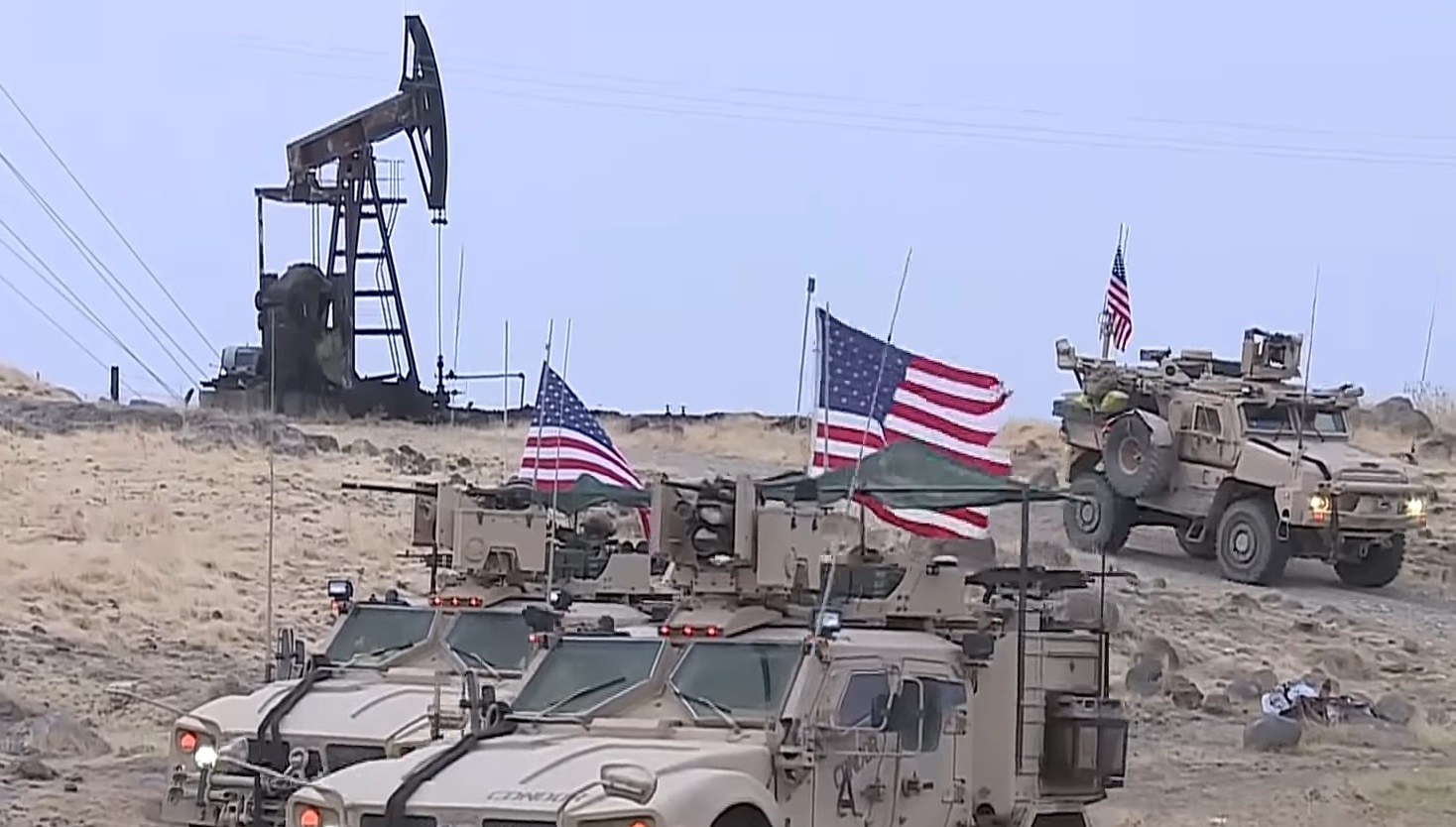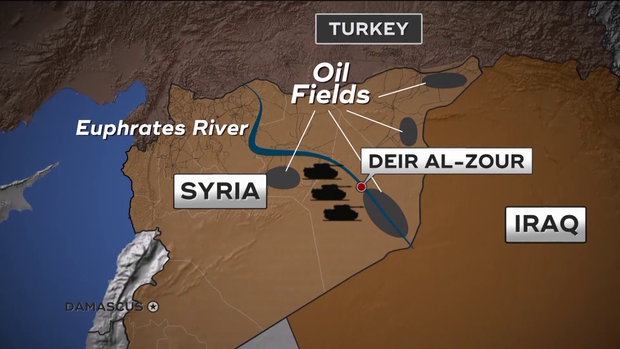
Here’s the Current US Plan to Build Up Syrian “Oilfield Guard” Proxies
Kyle Rempfer / Army Times
(August 2020) — Operation Inherent Resolve officials want to double the size of some proxy forces in Syria and finish training a 2,200-man “oilfield guard” unit in the northeastern part of the country, according to an OIR inspector general report released Aug. 4.
The IG report came as an agreement was made public between a Delaware-based firm called Delta Crescent Energy LLC and Kurdish-led authorities in Syria to develop and export crude oil in areas under their control. Syria’s foreign ministry called the arrangement an illegal deal aimed at “stealing” Syrian oil.
US officials involved in the OIR campaign to defeat the Islamic State have said their plans to secure oil fields deny ISIS a valuable revenue stream. The area controlled by US-backed Syrians likely produced at least 30,000 barrels of oil per day, garnering between $1 million and $3 million a day in revenue, until the recent price collapse, according to the IG report.
Although US-backed Syrians have “bolstered” their “security presence near major oil and gas fields in northeastern Syria,” they have “remained co-located with Coalition forces whose protection SDF [Syrian Democratic Forces] leaders still depend on,” the IG report reads.
The OIR mission sponsors a variety of units in Syria. In the eastern part of the country, the U.S-backed SDF are divided into three regional commands — Middle, South and East. Those are partnered with the Internal Security Forces, or InSF, and the Provincial Security Forces, or PRISF, on operations.
The InSF, which conduct routine policing like controlling traffic and staffing checkpoints, number roughly 11,200 and have an end-strength requirement of 28,200, according to the report.
Hêzên Anti-Terror, a counterterrorism unit that routinely works with coalition forces against ISIS, has about 250 personnel “against a wider requirement for 800 personnel,” the report reads.
And “the critical petroleum infrastructure security forces” that protect sites in northeastern Syria “will number 2,200 once fully-manned and trained,” the IG report added.
The oilfield guard force is under the PRISF, which “undertake a broad range of border security tasks,” as well as security at ISIS prison sites. The PRISF have a desired end-strength of approximately 22,000, but it is not clear how close they are to reaching that goal.
Dates for those end-strength targets were not included in the report and OIR officials did not respond to a request for comment sent last week.
The funding for those units is provided through the Counter-ISIS Train and Equip Fund, which received $200 million for the Syrian mission in the 2020 budget. Military officials have asked for the same amount in their 2021 budget request.
By March, roughly half of the required oilfield guard force had already been trained, the report stated. The force is made up of site security guards and mobile perimeter security elements who operate surveillance cameras, set up blocking positions and can act as quick reaction forces “to attempts at sabotage,” the report reads.
Some of the end-strength plans for the PRISF units are also intended to secure ISIS detainees who “pose a growing risk,” according to the IG report.
OIR told the IG that there has been a “deterioration” of the situation in Syrian detention facilities that hold about 10,000 ISIS fighters, including approximately 2,000 foreign fighters from outside the region. Most of the foreign fighters remain there because their countries of origin are unable or unwilling to repatriate or prosecute them, according to the IG report.
The deterioration at the ISIS detention facilities came “despite an infusion of more than $2 million from the Coalition in recent months,” the IG report reads. Detainees rioted in one facility to protest their conditions and an uprising in another facility, where some detainees demanded trials and family visitations, lasted two days.
“While no escapes were reported during these riots, CJTF-OIR said that ‘the risk of a mass breakout cannot be discounted,‘” the IG report added.
The US military also garrisons a small contingent of special operators near Syria’s border with Iraq and Jordan, an outpost known as al-Tanf. There, US personnel have been training a local force called Mughawir al-Thawra. Numbers for that force structure plan weren’t provided in the latest IG report.
Kyle is a staff reporter for Military Times, focusing on the US Army. He served an enlistment as an Air Force Special Tactics CCT and JTAC.

US Plans To Build Up Proxy Kurdish Syrian Forces to Guard Oilfield
Jason Ditz / AntiWar.com
(August 10, 2020) — US plans for the ongoing war in Syria are, as they so often have been throughout, built around the idea that they can win by arming and propping up the right proxy forces. This is built around the other major US plan, to take Syria’s oil.
Indeed, an agreement on Delta Crescent Energy LLC making a contract on Syrian oil with the Syrian Kurds detailed further plans to bolster the Kurdish SDF and creating a force affiliated with them that will guard the US-occupied oilfield.
Official reports played up the US coordination with the SDF, and suggests that there is substantially more SDF capabilities that they intend to create going forward. That isn’t to say it doesn’t leave open some questions, however.
Even if this is the ultimate plan for taking Syria’s oil, it is not clear what the timeline is for removing the rest of the troops. If this is the endgame scenario, presumably having the SDF protect the oil frees up US troops to leave.
It’s also not clear what all of this is going to cost. The Syrian oil is fairly minimal, and the revenue will be low, so the US is probably going to have to subsidize the occupation above and beyond that.
Posted in accordance with Title 17, Section 107, US Code, for noncommercial, educational purposes.